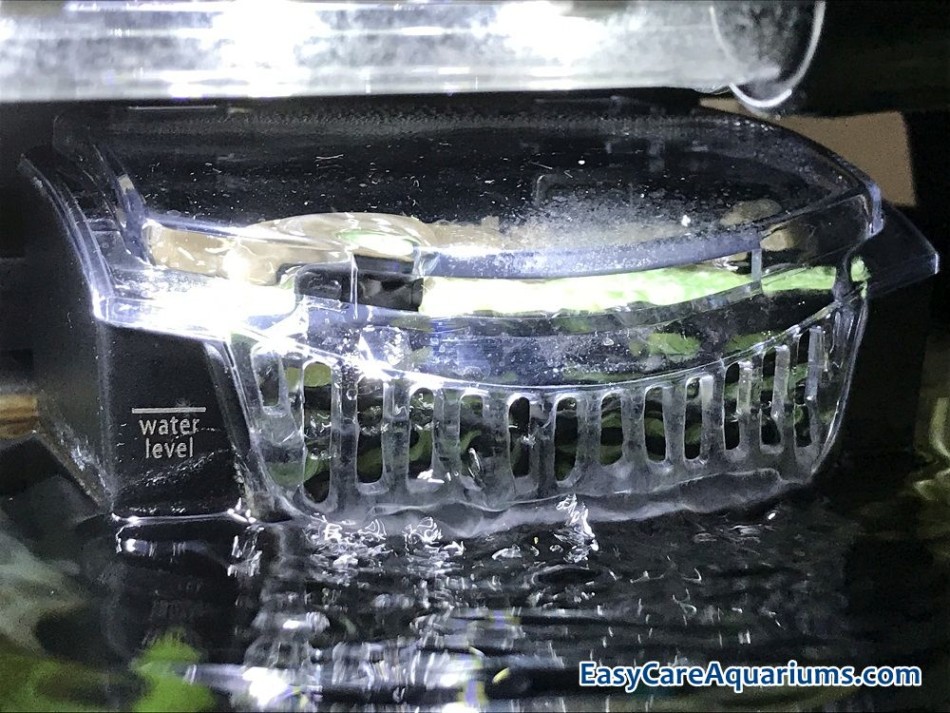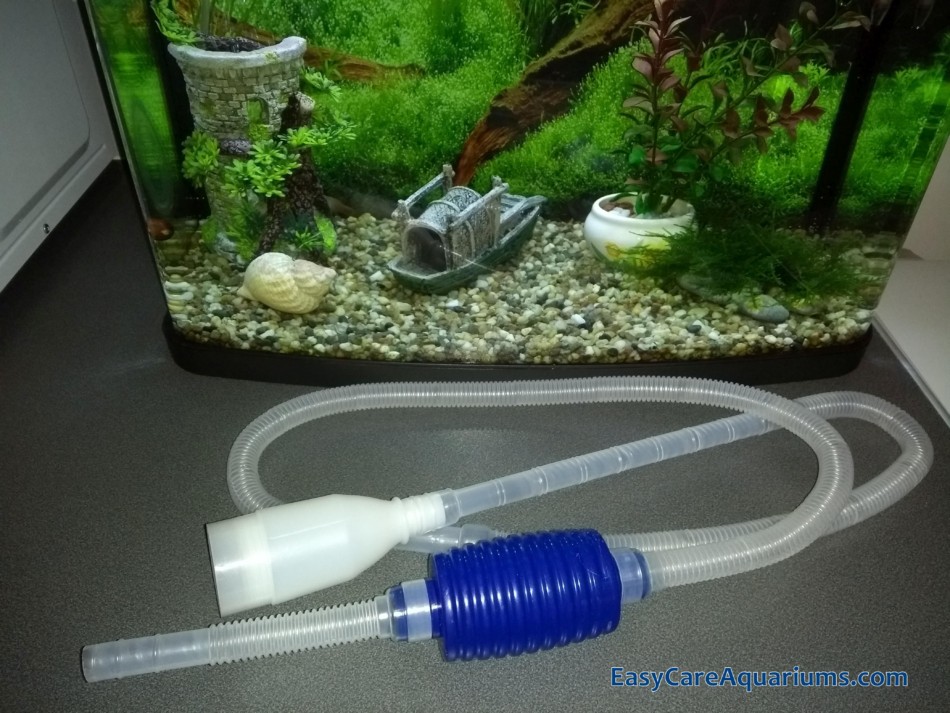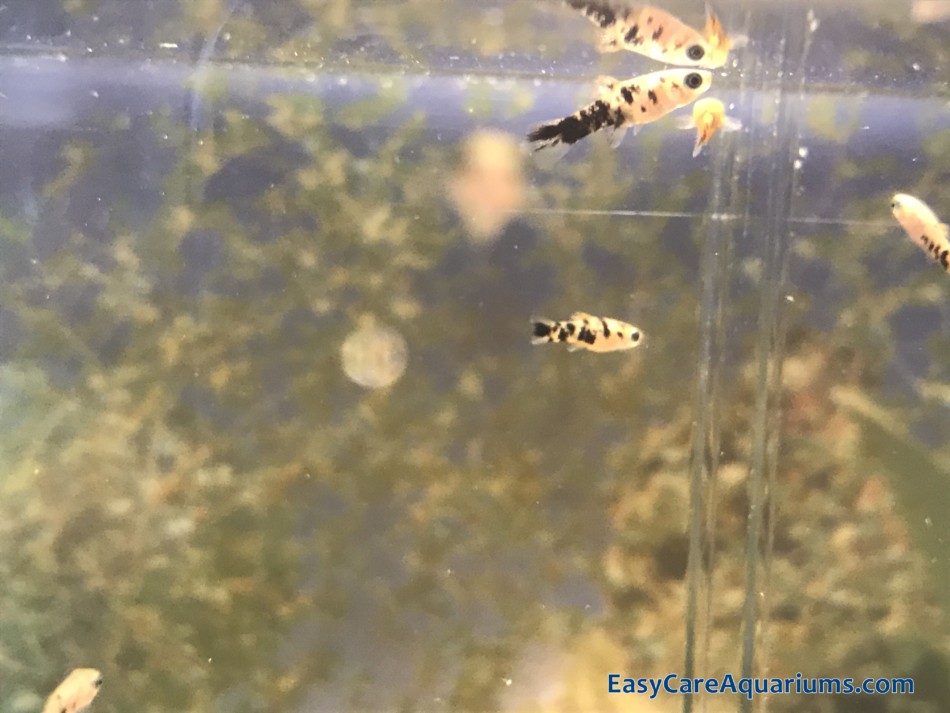This article may contain some affiliate links to products. The links provide me a small percentage of commission but do not cost you anything extra to use. (See full disclosure statement here ).
).
If your tank is cloudy you might think you’re doing something wrong or worry about how it may affect the fish. After all people start an aquarium hobby for many reasons. But everyone that does so wants to be able to see the little creatures in their tank. I know that I find it relaxing to spend time watching my fish, shrimp and snails. So what causes an aquarium to look cloudy?
A new tank setup will often become cloudy after a couple of days. This is due to the bacteria levels from your new fish or plants trying to regulate. But an already established aquarium can become cloudy due to over feeding, leading to leftover food debris and excess poop. Decaying plant matter or having too many fish can also cloud up the tank.
How to resolve this murky problem will depend on identifying which of the several factors has caused the cloudiness in your aquarium. See below for the common reasons for white cloudy water and how it can be cleared up.
What Causes Cloudiness In A New Fish Tank?
1. Bacterial Bloom (also known as bacterial blossom)
In a new aquarium set up the cloudiness will mostly be caused due to going through the initial nitrogen cycle (cycling) process.
The cloudy water will usually not show up until a few days after a new set up. So you may think you have done something wrong. But don’t worry, this is perfectly natural and will settle down on its own after a short while once the bacteria levels have stabilized.

2. Not Cleaning Gravel Properly

This may sound obvious but if you are setting up a new tank you need to make sure the substrate you will be using has been thoroughly cleaned before using it. Otherwise the dust will be kicked up whenever anything agitates it in the water.
Put the gravel in a bucket or other suitable sized container. Then fill it with water. Make sure to agitate it well and then pour out the water. Do this several times until the water runs clear – this could take a while depending on where you got the substrate from. But is worth the effort now to save time emptying the tank out to re-clean it later.
Even bags of gravel that claim to be pre-washed might still be dusty. At the very least rinsing it with your own tap water will benefit your tank set up. After all, your tap water will be the water you use to fill up the new aquarium.
3. Putting Fish In The Tank Too Quickly
When first setting up a new tank it is best to leave it for at least 24 hours before adding fish. This will give the bacteria in the cycling process a chance to multiply a bit before having to do its job of clearing up after the fish.
4. Adding Too Many Fish At Once
It is recommended that you add a few fish at a time over 2-4 weeks in order to give the cycling process time to settle down. Otherwise there may be too much debris for the good bacteria to cope with.
If you are new to the fishkeeping hobby you will also be trying to figure out how much to feed your fish. Which will likely lead to there being quite a bit of food debris or waste matter building up initially.
5. The Filter Hasn’t Cycled Fully
If there is not enough beneficial bacteria in the filter to eat it up an ammonia spike can be caused from too much fish waste.
Filter media needs time to build up it’s bacteria levels so make sure not to clean it too much.

6. The Filter Is Too Powerful
If the filter is too powerful it may be too efficient in cleaning up the ‘food’ that the bacteria need and so they can’t multiply quickly enough. If this is the case then try reducing the flow rate on your filter for a week or so until things clear up.
How To Solve The Cloudy Water Issue In A New Aquarium
If your aquarium wasn’t properly cycled then reduce how much you feed the fish. This will reduce the amount of leftover food debris and also the quantity of waste produced by the fish.
General advice is to reduce feeding to every 2 or 3 days. But you’ll figure out what is a good feeding routine for your new pets by keeping a close eye on how much food they are leaving, or how much poop they are producing.
A good rule of thumb is that you should only feed them enough to be eaten in about 2 -3 minutes. Some fish have rather large appetites and will seemingly eat all day if they’re allowed to. But even the fastest of eaters can’t keep up if they are given too much food and so it will sink to the bottom of the tank and start to decay. Some of my fish supplement their regular flake food with grazing on the bio-film and algae that has built up on the surfaces of the ornaments, plants and glass.
If you believe your tank isn’t fully cycled and that this may be the cause of your cloudy water then do a small partial water change. Also remove as much of the debris in the substrate as possible with a gravel vacuum.
There are a few other things you can do to help.
- Don’t add new fish until bacterial bloom has gone
- If you have another tank then using used filter media from it can help speed up the cycling process
- If, after a week or so the water hasn’t cleared then you can do regular 25% partial water changes until the issue is resolved.
Reasons For Cloudiness In An Established Aquarium
Some of the reasons for cloudy water in an established tank will be the same as for the new tank setup.
1. Mini Cycle
If you’ve recently had an overhaul of your aquarium such as changing the substrate, the filter, or you’ve done a big water change, then it’s likely the tank is going through a mini version of the cycling process again. The water should clear by itself over time if this is the case.
2. Too Many Fish (or other tank dwellers)
If there are too many fish for the size of the tank this could result in a lot of waste matter building up in the substrate.

3. Excess Food
Overfeeding your creatures could result in leftover food debris and lots of poop. After all, what goes in will come out eventually. This build up could result in an ammonia spike.
4. Fish, Shrimp or Snails That Stir Up The Substrate
If there is a build up of debris in the gravel, this could be agitated by those tankmates that prefer to live at the bottom.
5. Dead Fish Or Decaying Plant Matter
If one of your fish has recently died unnoticed then it could be decomposing. You may think it would be hard to miss a dead fish but if you have a large tank with lots of plants and ornaments then it’s quite feasible.
With a larger tank containing a fair number of fish and their tankmates it would probably not be possible to do a roll-call every day!
I only have Nano tanks but I make a point of checking that all my fish, shrimp and snails are accounted for whenever I feed them. Even so, when one of my platy fish died it took a while to find her as she had gotten wedged behind the filter.
In my very small shrimp tank I couldn’t find one of the new shrimp one morning. And after a lot of searching I had to conclude it had died and been eaten by the other inhabitants overnight.
6. Inadequate Filtration
It could be possible that you have the right size filter but wrong filter media. Or your haven’t been changing the filter media often enough so no new debris is being filtered out.
7. The Glass Is Dirty
This might sound like the most basic thing in the world but the cloudy water might not actually be cloudy. It could be that there is a build-up of biofilm on the glass of the tank itself.
Rectifying Cloudy Water In An Established Tank Setup
Here are a few things that will help clear up the hazy view in your aquarium.
1. Regular Water Changes
Up the water changes to 40-50% a day until the cloudy water has gone. Such large water changes might not be possible though depending on what types of aquatic pets you are keeping. For example Neocaridina Shrimp don’t like too much water changing in one go.
2. Gravel Vacuum

This will pull out the uneaten food and poop from the substrate at the bottom of your tank. Even if you keep snails or shrimp that feed on this they will have a hard job reaching all of the debris.
3. Change The Filter Media
Regular cleaning of the filter media ensures it can work properly. Just make sure not to clean it too much. Each filter type is different so make sure to follow the instructions that came with yours.
4. Clean The Glass
A simple clean with a sponge or algae scaper can keep the glass from making the water look cloudy.
Chemical Things To Help
In case none of the above has resolved your cloudiness, or you need a faster resolution, then here are some of the things that could help.
Take care if using these though and make sure to follow the instructions carefully. As putting any type of chemicals in your tank can have disastrous consequences if not done correctly.
- Water clarifiers (flocculates) helps the particulates clump together and they can then be removed or filtered.
- Seachem prime
 to protect the fish (link takes you to Amazon)
to protect the fish (link takes you to Amazon) - Bacteria enhancers to help feed the bacteria
- Resins to absorb the ammonia and nitrites
- Water parameter test kit

